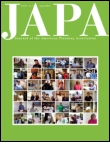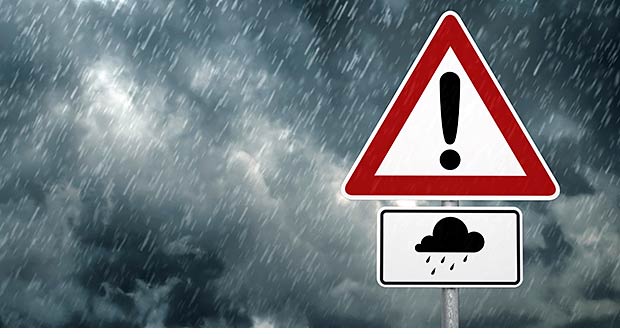TAMU disaster researchers pen four scholarly articles in JAPA

Special issue:
"Planning for
Disaster Recovery"
Texas A&M’s national prominence in disaster planning research is evidenced in the February 2015 Journal of the American Planning Association special [issue] (http://www.tandfonline.com/toc/rjpa20/80/4#.VPTDCEJseRD) in which four of the publication’s 10 articles were penned by Texas A&M faculty and former students.
In the issue, “Planning for Disaster Recovery,” editors Karl Kim and Robert Olshansky selected research papers to help planners work more effectively in post-disaster planning because, they said, few sources offer planners guidance in the recovery phase of a disaster, few comparative studies exist and only recently has a literature of recovery theory begun to grow.
The papers by Texas A&M faculty and former students evaluate existing recovery plans, note which populations are more vulnerable in a disaster, trace the history of public agencies’ support of disaster recovery and explore additional key issues in disaster planning.
BERKE | COOPER | HORNEY

In one of the [papers] (http://www.tandfonline.com/doi/full/10.1080/01944363.2014.976585#abstract) , which evaluates 87 recovery plans in eight states, the authors found that coordination, participation, implementation and monitoring are essential to effective disaster recovery management. That paper was written by Philip Berke , professor and director of the [Institute for Sustainable Communities] (http://www.tamug.edu/iscc/) , John Cooper , associate professor of practice and director of [Texas Target Communities] (http://ttc.arch.tamu.edu/) , and Jennifer Horney , a faculty fellow at the [Hazard Reduction and Recovery Center] (http://hrrc.arch.tamu.edu/) . Also contributing were Meghan Aminto, emergency management consultant with IEM, and Shanon Grabich, ORISE Post-Graduate Fellow at U.S. Environmental Protection Agency.
They found that less than one-third of vulnerable communities in the study’s eight states have recovery plans and those plans received poor evaluations. The study also showed limited public support for recovery planning in all eight states.
PEACOCK | VAN ZANDT | HIGHFIELD | ZHANG

Another JAPA [paper] (http://www.tandfonline.com/doi/full/10.1080/01944363.2014.980440#abstract) authored by Texas A&M faculty and former students details how low-income and minority communities experienced slower and more uneven recoveries in the wake of Hurricane Andrew in Florida and Hurricane Ike in Texas.
The paper’s authors, Walter Gillis Peacock , professor and director of the HRRC, Shannon Van Zandt , associate professor and director of the [Center for Housing and Urban Development] (http://chud.arch.tamu.edu/) , and Wesley Highfield ‘01 and Yang Zhang ‘06 , both of whom earned Ph.D.s in Texas A&M’s [Urban and Regional Sciences] (http://laup.arch.tamu.edu/academics/graduate/ursc/) program, also reported that recovery in multifamily housing units is slower and more volatile than single-family housing and that renter-occupied homes recovered more slowly than owner-occupied homes.
JOHNSON

Another one of the [papers] (http://www.tandfonline.com/doi/full/10.1080/01944363.2014.967710#abstract) co-authored by [Laurie Johnson] (http://www.arch.tamu.edu/community/formerstudents/outstanding-alumni/past-honorees/138/) ’88, an outstanding alumna of the College of Architecture, chronicles the growing role of federal agencies in disasters. She and co-author Robert B. Olshansky, professor and head of Urban and Regional Planning at the University of California-Berkeley, concluded that communication and coordination needs to be improved between agencies involved in recovery planning at every level of government.
Johnson, who earned a [Master of Urban Planning] (http://laup.arch.tamu.edu/academics/graduate/mup/) degree at Texas A&M, heads her own disaster consulting and research [firm] (http://www.lauriejohnsonconsulting.com/) .
XIAO | ZHANG

The other [paper] (http://www.tandfonline.com/doi/full/10.1080/01944363.2014.989399#abstract) , penned by Yu Xiao , associate professor of urban planning, Yang Zhang and Divya Chandrasekhar, assistant professor of urban planning and environmental policy at Texas Southern University, detailed community recoveries following the 2004 Indian Ocean tsunami, the 2008 Sichuan, China earthquake and Hurricane Katrina. Authors detailed the need for deeper public participation in participatory planning following those disasters. They also found that people in their study areas were eager to assist the recovery.
Tags
- building a better texas
- chud
- coastal systems
- environment
- feature
- hazard reduction & recovery
- hazards
- housing & urban development
- hrrc
- land development
- land resources
- landscape architecture & urban planning
- planning
- research
- rss
- sustainability
- urban systems
Related Posts

Study eyes how lower Lake Conroe levels impact economy
Nation's safety enhanced by resiliency studies

A&M researchers collaborate in U.S. resilience center

HRRC marks 25th year championing resilience, planning
Follow Us
Facebook Twitter Vimeo Youtube Flickr RSS
Recent Posts

Planning prof heads study of disaster housing aid

A message from the dean

Former student remembered as expert planner

Leading educator named new head of Architecture Dept.






_thumbnail_small.png)
